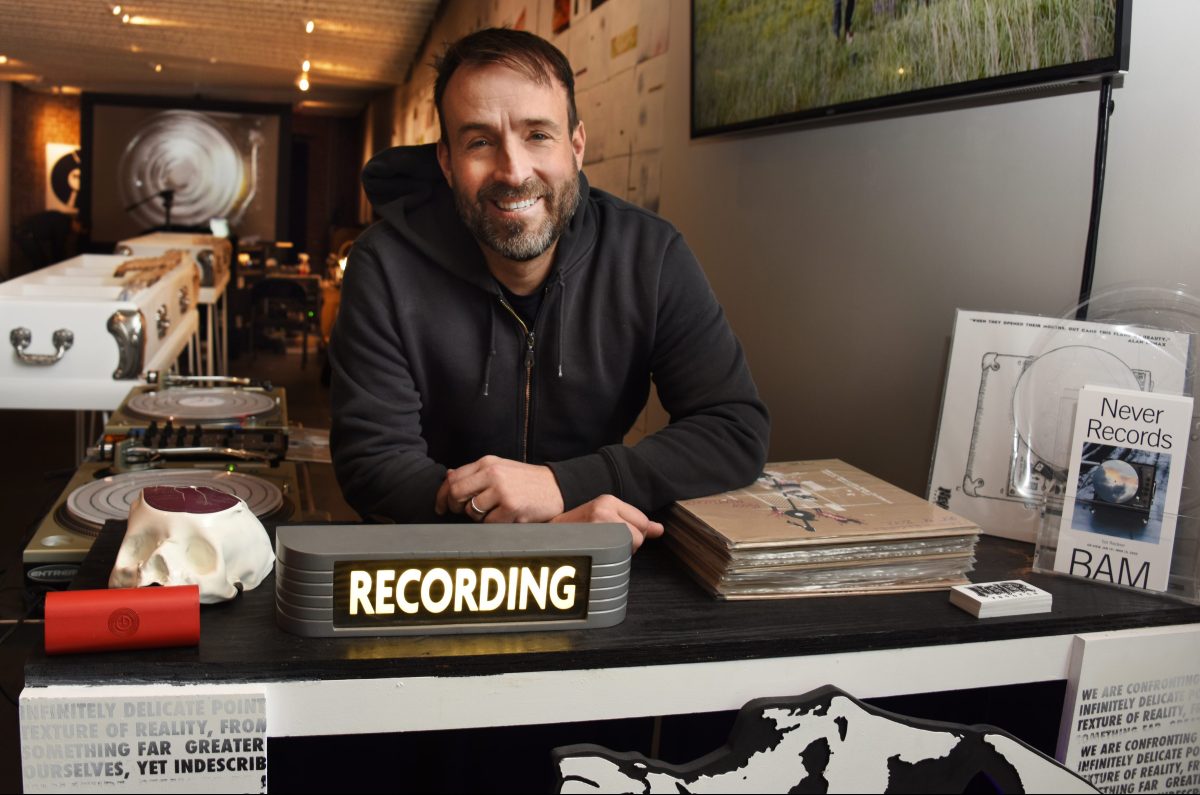BY BOB KRASNER
The Brooklyn Academy of Music has a new exhibition space, the Rudin Family Gallery, which is now showing Ted Riederer’s project “Never Records.” But when you enter Never Records, you are walking into something more than just an art show – you are in a performance space, recording studio, meeting place, art installation and a setting for the creation, transformation and preservation of ideas.
Thanks to the early support of Arturo Vega, Marianne Boesky, Metro Pictures and others, Never Records has been an ongoing project since 2010. Originally an exhibit sponsored by No Longer Empty in the abandoned Tower Records space downtown, it works like this: Riederer finds a space, transforms it to his liking and then welcomes local artists to come in and make a recording.
The performers – who range from jazz bands to poets to tap dancers to scientists to country singers – record their work with Riederer supervising the proceedings. Visitors are welcome to observe any parts of the activities (quietly, of course).
The artists then sit back and customize the two album covers that will house the vinyl LP’s while they wait for Riederer to mix the sound and then cut the LP’s with a special lathe bought in Germany. Only two get made – one album goes home with the artist, the other stays in the Never Records archive. A digital sound file also goes home with the artists and “they can do what they want with it, sell it, whatever.”
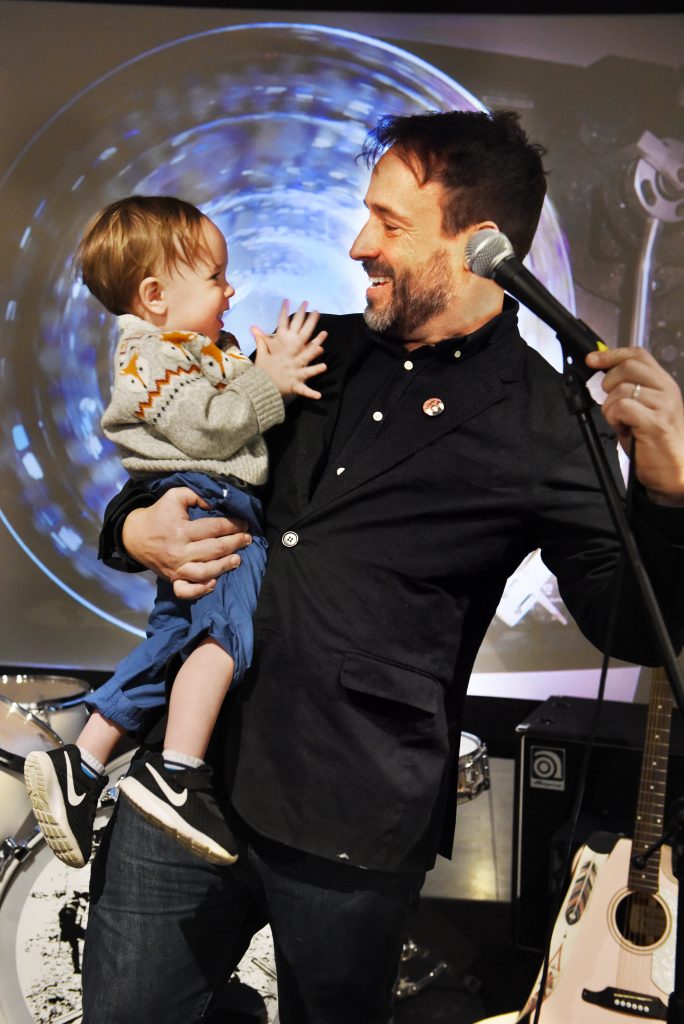
The setting at the BAM gallery contains the entire archive of the project, almost 600 records in unique covers that were created in Kansas City, Liverpool, Derry, London, New Orleans, Lisbon, Victoria, Texas and Amman, Jordan. Instead of resting in simple record bins, Riederer has fabricated holders specially for this location that look like coffins.
“That’s about the resurrection of vinyl as a media, but more about the transcendence of art and music,” he explained.
In addition, an entire wall is covered with album covers that have been painted over, leaving a word or a phrase uncovered on each one. When read from one end to the other, they reveal a poem written by Riederer.
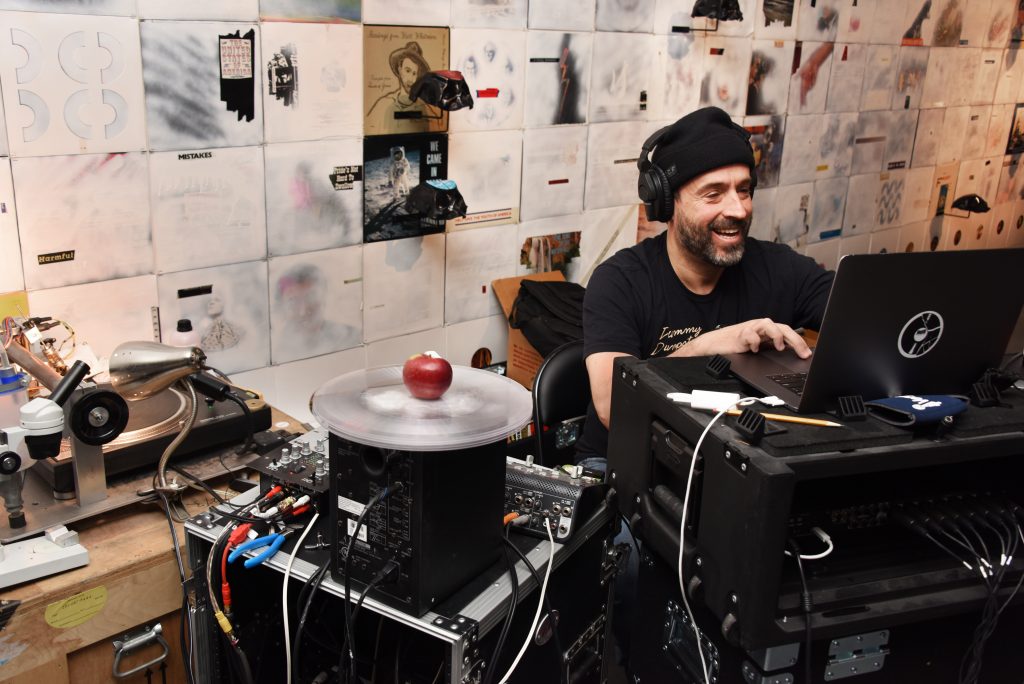
Another work on view is “The Cosmos Record,” a turntable covered with crystals (“the visualization of sound,” says Ted) that is constantly spinning under a camera which projects the work onto a screen on the opposite end of the room, where the performers record, creating a kind of visual loop in the space.
Near the stage is where Riederer mans the laptop for mixing and the lathe that cuts the records, which are created on clear PVC plastic. He carefully explains the process to participants and observers – sometimes with drawings – who have varied greatly around the world.
In Jordan, oddly enough, he recorded a Japanese opera singer, but the high point there was when a group of Sudan refugees from the Fur tribe showed up “dressed to the nines, but very shy and cautious.” Ted recalled that “the session began very formally, but as the music took over they let their guard down.” When he played their recording back, everyone, including Riederer, was dancing in the shop.
“It was one of those crystalline moments where I knew there was nothing I’d rather be doing and nowhere else I’d rather be,” said Riederer.
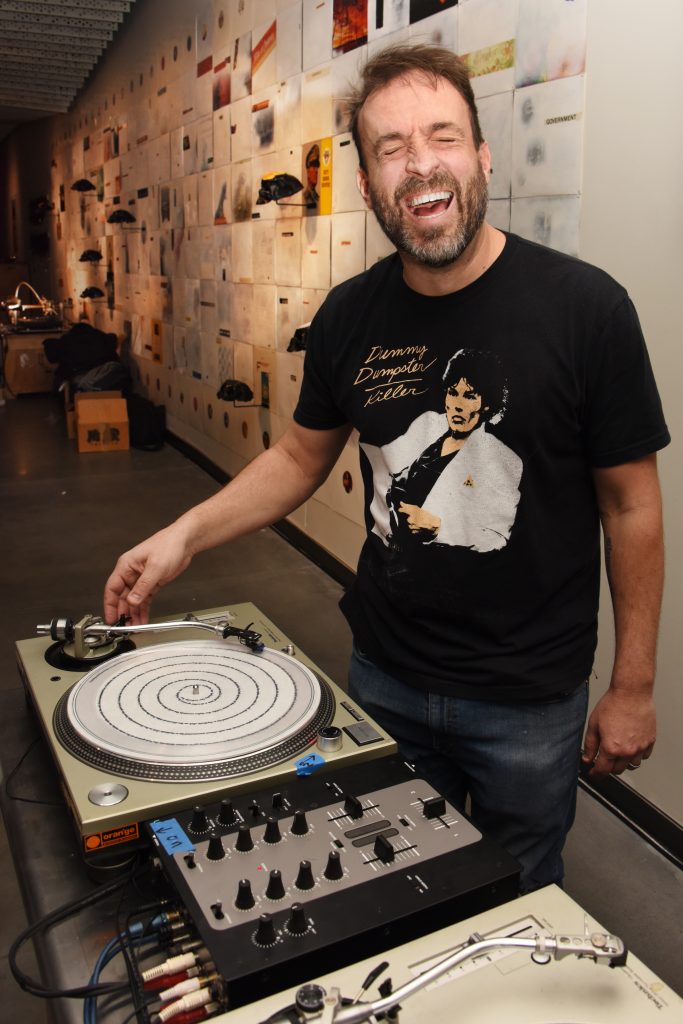
An even more worldly performance came at the request of a man in Kansas City whose father had passed away. His siblings were scattered around the world, so Ted made calls to Sardinia, Switzerland and Mexico so that he could record each of them singing the lullaby that their father used to sing to them. The recordings were then blended together to form a “gorgeous global lullaby.”
Closer to home, there have already been a variety of performers recorded at BAM. Performance artist Jorge Clar re-enacted his piece “Dishwashing Meditation,” where he explains how he uses his time at the sink in a positive way.
“Participating in Ted’s ‘Never Records’ project was a dream come true,” Clar said. “It became a ritual within a ritual. As a collector of vinyl records and fan of analog recording, the process was wonderful for me. And what an honor to be a part of Ted’s show!”
Aaron Morell, who described himself as a writer, housepainter and amateur musician, brought his eight year-old daughter Mackenzie along to perform an original tune titled “Little Timmy and the Big Cherry.” Morell started writing the song 17 years ago, “but this was the impetus to finish the song.”
He got a good review from his young singing partner, who said that she “likes the song because it’s funny.” And she nodded and smiled when her dad proclaimed that it was “a pretty cool experience.”
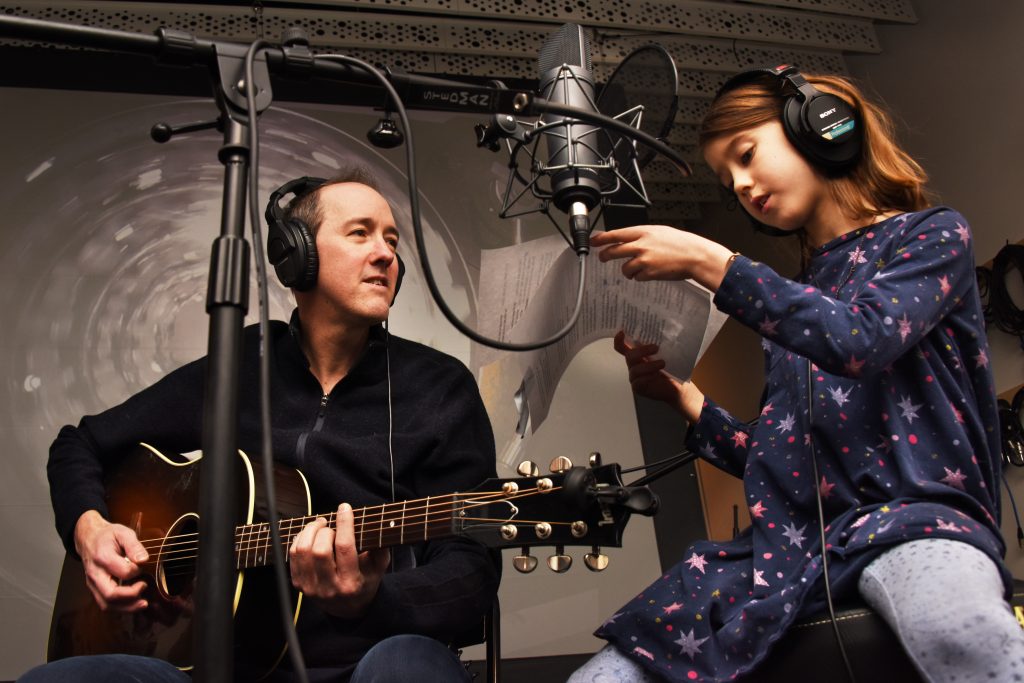
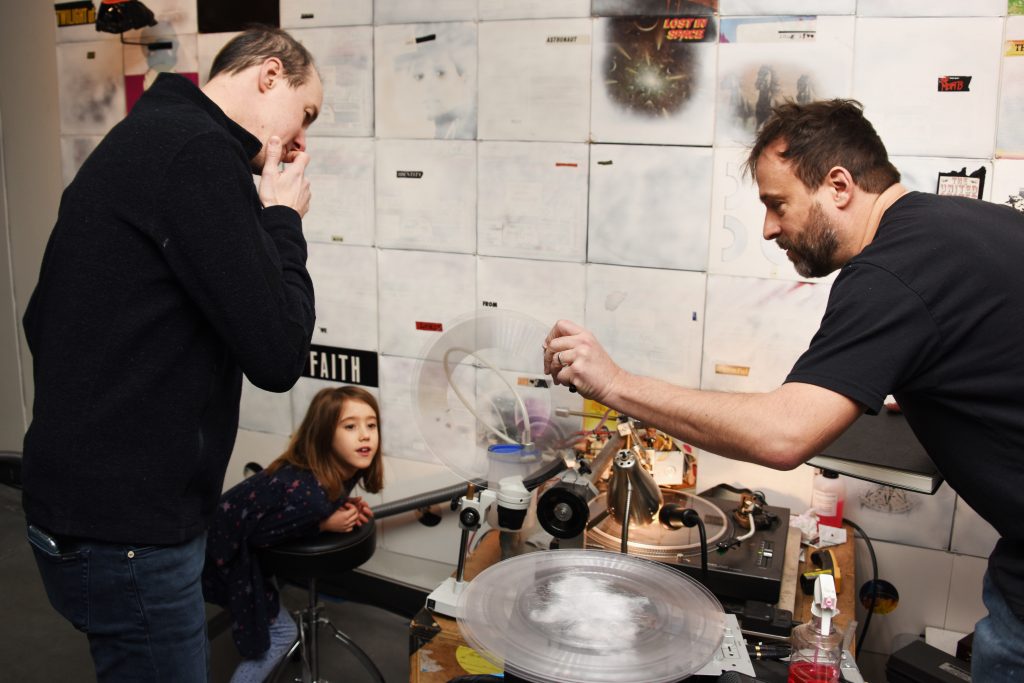
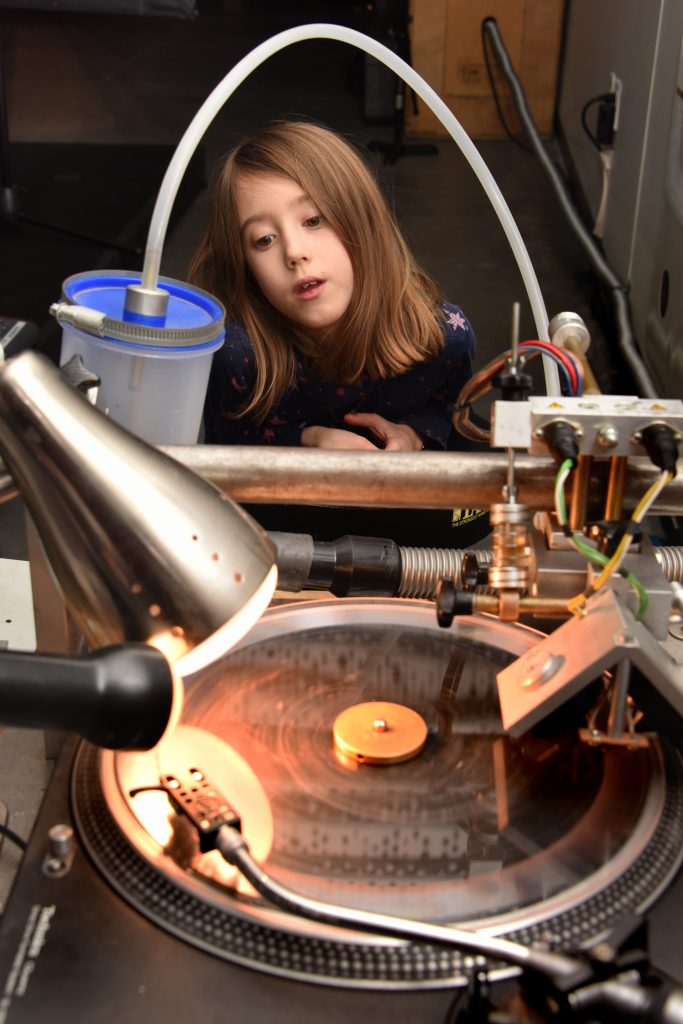
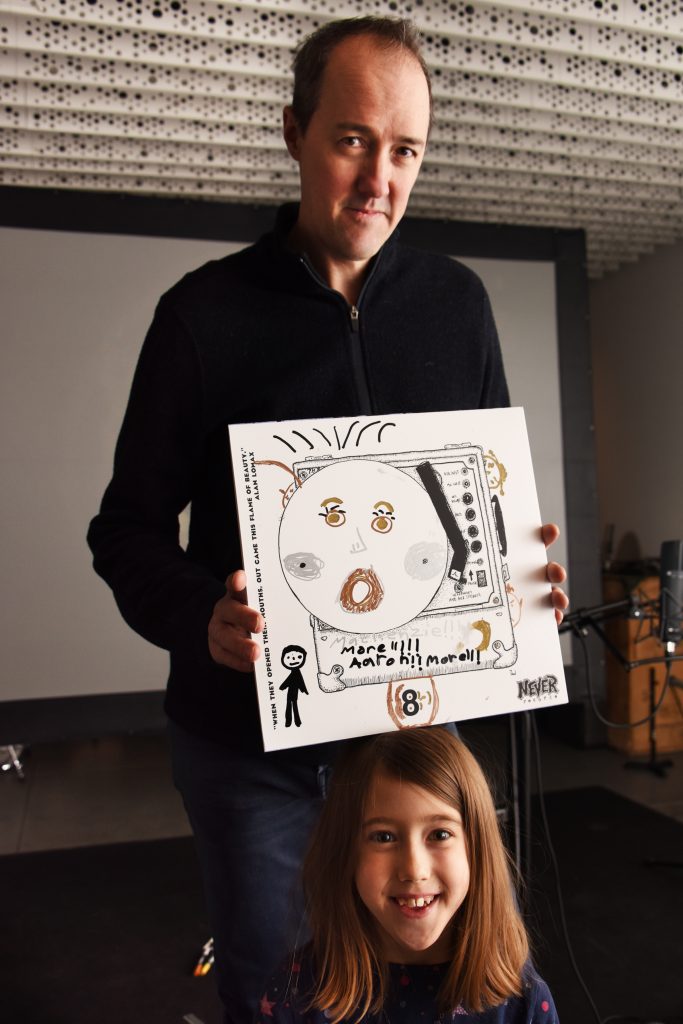
“Today was special,” Ted noted, “having a father and daughter make a record.” It might be difficult for a generation that grew up on CD’s and MP3’s to understand, but there are a lot of people who see the classic LP as something special. Riederer, who started playing in bands when he was thirteen, fondly recalls the record store in Maryland that he hung out in religiously – “Yesterday and Today” – as the place where he “learned to be a human being.”
“Because the draw here is vinyl, some people come out of curiosity. But for a lot of people the dream is to be on vinyl. It’s not about fame, it’s about art.” And he doesn’t have a problem with the fact that he is creating a very limited edition for each session. “I like precious objects,” he says.
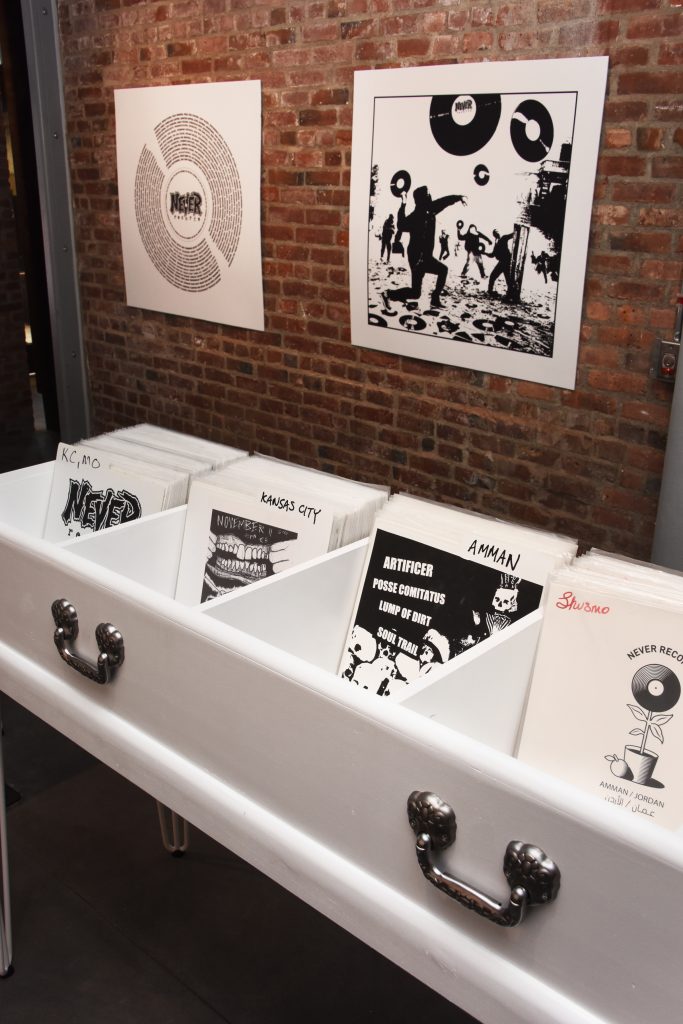
Riederer hopes to continue making those objects for as long as people are interested. He’s planning for the next location to be in Israel and he still hopes that some of the places that have fallen through in the past – in Mexico, Liberia, Ecuador, India – will come through.
“The reason for the longevity of the project is that despite all the division and negative rhetoric, people still want to hear the words and music of others. If no one cared about listening to other people, I wouldn’t have been able to do this for ten years. “
And he manages to do it without corporate sponsorship. He turned down a lot of money from Samsung with no regrets, for example. “I have a day job at an awesome gallery (Howl Happening),” he explained. “I want to keep my art free of corrupting influence.”
“Never Records is a crazy, magical thing,” he says, smiling. “I’ve had the best decade of anyone I know.”
For more information about the exhibit, visit www.bam.org/visual-art/2020/never-records. Podcasts featuring Never Records recordings can be found here: soundcloud.com/user-433696173
Never Records info: neverrecords.net



